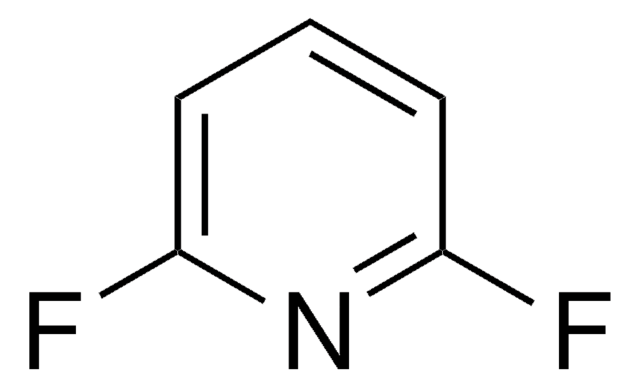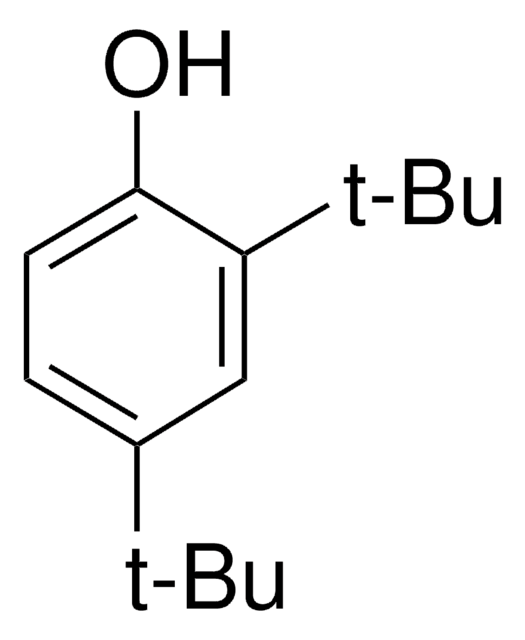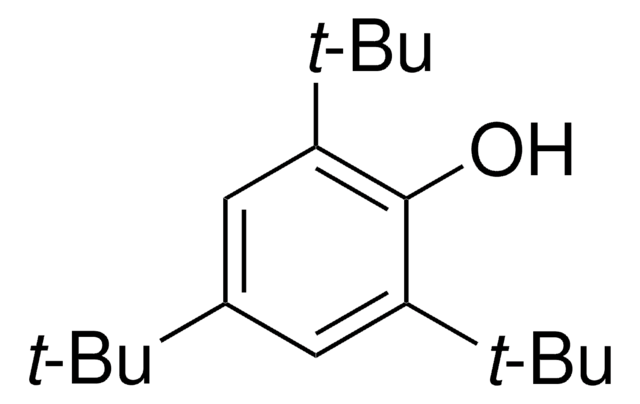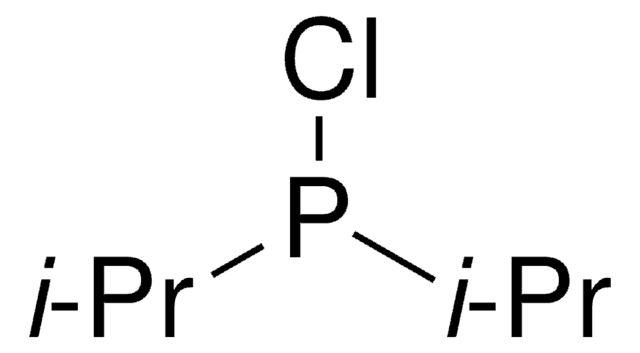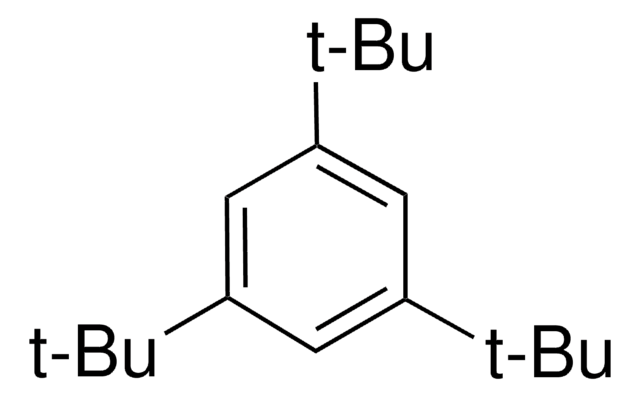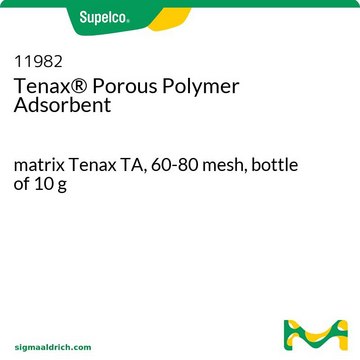Wszystkie zdjęcia(1)
Key Documents
About This Item
Wzór liniowy:
(C6H5)2C6H3OH
Numer CAS:
Masa cząsteczkowa:
246.30
Numer WE:
Numer MDL:
Kod UNSPSC:
12352100
Identyfikator substancji w PubChem:
NACRES:
NA.22
Polecane produkty
Poziom jakości
Próba
98%
Postać
solid
mp
101-103 °C (lit.)
grupa funkcyjna
phenyl
ciąg SMILES
Oc1c(cccc1-c2ccccc2)-c3ccccc3
InChI
1S/C18H14O/c19-18-16(14-8-3-1-4-9-14)12-7-13-17(18)15-10-5-2-6-11-15/h1-13,19H
Klucz InChI
ATGFTMUSEPZNJD-UHFFFAOYSA-N
Szukasz podobnych produktów? Odwiedź Przewodnik dotyczący porównywania produktów
Opis ogólny
2,6-Diphenylphenol reacts with with (n)BuLi, NaH, KH, or Rb or Cs metal in benzene to yield the solvent-free complexes [M(OAr)]x.
Zastosowanie
2,6-Diphenylphenol has been used:
- as ligand during the synthesis of reduced coordination (less than 6), unchelated manganese oxygen cluster systems
- in the preparation of derivatives of pyrazine-2,3-dicarbonitrile, precursor required for the synthesis of octaazaphthalocyanine (AzaPc) derivatives
This page may contain text that has been machine translated.
Hasło ostrzegawcze
Warning
Zwroty wskazujące rodzaj zagrożenia
Zwroty wskazujące środki ostrożności
Klasyfikacja zagrożeń
Aquatic Acute 1 - Aquatic Chronic 1
Kod klasy składowania
11 - Combustible Solids
Klasa zagrożenia wodnego (WGK)
WGK 3
Temperatura zapłonu (°F)
Not applicable
Temperatura zapłonu (°C)
Not applicable
Środki ochrony indywidualnej
dust mask type N95 (US), Eyeshields, Gloves
Wybierz jedną z najnowszych wersji:
Masz już ten produkt?
Dokumenty związane z niedawno zakupionymi produktami zostały zamieszczone w Bibliotece dokumentów.
Klienci oglądali również te produkty
Saad Makhseed et al.
Chemistry (Weinheim an der Bergstrasse, Germany), 14(16), 4810-4815 (2008-05-01)
The synthesis of octaazaphthalocyanine (AzaPc) derivatives, with bulky phenoxyl substituents placed at eight peripheral positions and containing either H(+), Ni(2+) or Zn(2+) ions in their central cavity, is described. The required precursors, derivatives of pyrazine-2,3-dicarbonitrile, were prepared using a nucleophilic
Charles S Weinert et al.
Inorganic chemistry, 42(19), 6089-6094 (2003-09-16)
Reaction of 2,6-diphenylphenol (HOC(6)H(3)Ph(2)-2,6) with (n)BuLi, NaH, KH, or Rb or Cs metal in benzene gives the solvent-free complexes [M(OAr)]x in excellent yield. The complex [Rb(OC(6)H(3)Ph(2)-2,6)](x)() exhibits a ladderlike structure in the solid state with triply bridging oxygen atoms and
Sandeep K Kondaveeti et al.
Inorganic chemistry, 51(19), 10095-10104 (2012-09-06)
The synthesis of reduced coordination (less than 6), unchelated manganese oxygen cluster systems is described. Addition of phenols to Mn(NR(2))(2) (R = SiMe(3)) results in protolytic amide ligand replacement, and represents the primary entry into the described chemistry. Addition of
Camilo J Viasus et al.
Chemistry (Weinheim an der Bergstrasse, Germany), 23(68), 17269-17278 (2017-10-17)
The reactivity of carbon dioxide with vanadium(III) aryloxo complexes has been investigated. The formation of either carbon monoxide or incorporation into the ligand system with the ultimate formation of organic ester was observed depending on the overall electron donor ability
Ursula J Williams et al.
Dalton transactions (Cambridge, England : 2003), 43(43), 16197-16206 (2014-08-26)
The trivalent compound K[Ce[N(SiHMe2)2]4] was synthesized and oxidized, providing a convenient route to the reported cerium(IV) compound Ce[N(SiHMe2)2]4. Protonolysis reactions of Ce[N(SiHMe2)2]4 with tert-butanol, substituted benzyl alcohols, and 2,6-diphenylphenol yielded the neutral tetravalent compounds Ce(O(t)Bu)4(py)2, Ce2(OCH2C6R5)8(thf)2 (R = Me, F)
Nasz zespół naukowców ma doświadczenie we wszystkich obszarach badań, w tym w naukach przyrodniczych, materiałoznawstwie, syntezie chemicznej, chromatografii, analityce i wielu innych dziedzinach.
Skontaktuj się z zespołem ds. pomocy technicznej